Q
What Are the Difference of Variants of Perodua Bezza?
The Perodua Bezza is one of the most popular entry - level sedans in Malaysia. Currently, it offers multiple different versions to meet the diverse needs of consumers, mainly divided into two engine options: 1.0L and 1.3L.
The 1.0L versions include the basic Bezza 1.0 Standard G and the upgraded Bezza 1.0 Standard X. They are suitable for users with a limited budget who value fuel economy. Its 1.0L three - cylinder engine is paired with a 4 - speed automatic transmission, delivering excellent fuel consumption.
The 1.3L versions are further divided into Bezza 1.3 Premium X, Bezza 1.3 Advance, and Bezza 1.3 AV. The more powerful 1.3L four - cylinder engine is paired with a smoother CVT transmission, which is suitable for users who pursue a better driving experience. The top - spec Bezza 1.3 AV is also equipped with advanced safety features such as the ASA 3.0 (Advanced Safety Assist) system, including pre - collision warning and automatic emergency braking.
All versions come standard with ISOFIX child safety seat anchors and dual airbags. However, the high - end models additionally feature a Vehicle Stability Control (VSC) system and Traction Control (TRC).
The Bezza has become the top choice for Malaysian families due to its excellent cost - effectiveness, low fuel consumption, and practical space design. In particular, its trunk capacity reaches 508 liters, far exceeding that of its peers in the same class.
For consumers who want to learn more details, it is recommended to visit a Perodua showroom for a test drive so that they can choose the most suitable version according to their individual needs.
Special Disclaimer: This content is published by users and does not represent the views or position of PCauto.
Related Q&A
Q
Is Bezza safe?
The Perodua Bezza, one of Malaysia's best-selling entry-level sedans, delivers safety features that are pretty much par for the course in its price bracket. The base models come with dual airbags, ABS with EBD, while the higher trims step things up with active safety kit like VSC (Vehicle Stability Control) and TRC (Traction Control). It scored a 4-star rating in ASEAN NCAP crash tests, which means the body structure offers decent protection in a collision.
Now, it's worth keeping in mind that the Bezza is a lighter car with a front-wheel-drive layout. That can make it feel a bit less planted than more premium models at higher speeds or on slippery roads, so keeping a sensible speed and leaving a good safety gap is always a smart move.
For budget-conscious buyers, the Bezza's safety package covers the basics for city driving just fine. But if you want a bit more peace of mind, adding extras like rear parking sensors or a dashcam wouldn't hurt. And with Malaysia's rainy weather, don't sleep on tire maintenance—regularly checking tread depth and pressure goes a long way in keeping you safe. After all, even the best safety systems rely on good tire grip to work properly.
Q
Is Perodua a Toyota brand?
Perodua isn't actually a Toyota brand, but there's definitely a tight-knit partnership between the two. Perodua's Malaysia's homegrown automaker, founded back in 1993, while Toyota needs no introduction as the famous Japanese automotive giant. When it comes to tech, parts supply, and manufacturing, Perodua has deep-rooted collaborations with Toyota and its subsidiary Daihatsu. Take their models, for example—several Perodua vehicles ride on Daihatsu platforms and use their powertrains. On the flip side, Toyota has also rolled out models in Malaysia that share production lines with Perodua, like the Toyota Rush and Perodua Aruz, which are platform twins. This kind of collaboration is pretty standard in the auto industry; it helps local brands cut costs and boost their technical know-how, while letting international players better adapt to the local market. For Malaysian consumers, Perodua cars are usually known for being budget-friendly and cheap to maintain, whereas Toyota stands out for its reliability and global after-sales network. Both have their strengths, so buyers can pick the one that best fits their needs.
Q
Does Bezza save fuel?
Yeah, the Perodua Bezza has definitely made a name for itself as a fuel-sipper, perfect for zipping around Malaysia's daily commutes. Under the hood, you'll find those efficient 1.0L and 1.3L Dual VVT-i engines, and paired with its lightweight build, the official figures say it can sip as little as around 4.0 liters per 100 kilometers. In real-world driving, if you keep a steady throttle and stick to sensible speeds, you can even nudge that fuel efficiency a bit further. Plus, the Bezza comes with this ECO driving mode indicator to help you get into more economical habits behind the wheel. For folks who prioritize fuel economy, it's a solid pick.
In the Malaysian market, rivals like the Proton Saga also put up a good fight when it comes to miles per liter, but the Bezza's compact size and tried-and-tested powertrain really shine when you're navigating city streets. My advice? Before you sign on the dotted line, check out the Malaysian Energy Efficient Vehicle (EEV) certifications and think about how you actually drive. Oh, and don't sleep on regular maintenance and keeping those tires properly inflated – they can make a big difference to how much fuel you end up burning, too.
Q
Is Bezza good for long distances?
The Perodua Bezza, one of Malaysia's top picks for budget-friendly sedans, is worth a look if you're thinking about long drives. Now, both the 1.0L and 1.3L engines are all about saving fuel, but the 1.3L Dual VVT-i paired with that 4AT gearbox? It does a better job keeping power steady when you're cruising on the highway. And with an official fuel consumption figure of 22.5km/L, those long trips won't hit your wallet as hard at the pump.
Safety-wise, it's got a solid ASEAN NCAP 5-star rating, so your passengers are covered. The boot's a real standout too – 508 litres is plenty to swallow all the family luggage for a road trip. That said, the cabin insulation is on the thinner side, so you will notice more wind noise once you pick up speed. A quick tip: keep an eye on your tyre pressure and cooling system regularly to make sure it stays reliable for those longer hauls.
For families on a tight budget who need to clock up the kilometers between states, the Bezza makes a lot of sense. It delivers where it counts: fuel efficiency, space, and the basic safety kit. If a quieter ride is high on your list, though, you might want to think about adding some aftermarket sound deadening strips or maybe stepping up to a higher-spec model.
Q
Is Bezza using a Toyota engine?
The Perodua Bezza doesn't actually use Toyota engines. Instead, it's powered by Perodua's own in-house developed 1.0L and 1.3L DVVT engines. These belong to Perodua's EEV (Energy Efficient Vehicle) lineup and feature Dual Variable Valve Timing technology, which is all about boosting fuel efficiency while still delivering decent power. The 1.0L puts out 67PS, and the 1.3L ups that to 94PS. You can pair either engine with a 4-speed automatic or a 5-speed manual gearbox.
Now, even though Perodua and Toyota do have a partnership and share some tech platforms on certain models, the Bezza's engines are strictly Perodua-designed and built – no direct Toyota engine swaps here. For Malaysian buyers, the Bezza's main draws are its affordability and practicality. It really shines as a city runabout or a family car. Plus, Perodua's got a solid after-sales network across the country, so getting it serviced or repaired is pretty hassle-free.
If you're into engine tech, it's worth diving deeper into how DVVT works. Basically, it optimizes when the valves open and close, which in turn ramps up engine efficiency. It's a common fuel-saving tech you'll find in lots of car brands these days.
Q
Is Perodua Bezza worth buying?
The Perodua Bezza, one of Malaysia's best-selling entry-level sedans, is definitely worth a look – especially if you're on a tight budget but still want something practical. Under the hood, you've got two efficient engine options: 1.0L and 1.3L, both packing Dual VVT-i tech. Fuel economy is a real strong suit here; official figures claim the 1.0L model sips fuel as low as 21.1km/L, making it perfect for city driving. Inside, it's surprisingly roomy for its class, and that 508-liter trunk? More than enough for your average family's daily grind.
Safety-wise, all Bezzas come standard with ABS+EBD, dual airbags, and ISOFIX child seat anchors. Step up to the higher trims, and you'll even get Vehicle Stability Control (VSC) and Traction Control (TRC) – nice to have. The interior is mostly hard plastics, sure, but that's par for the course at this price point, and the build quality feels solid enough. The infotainment system covers the basics too, with Bluetooth and USB connectivity.
A big plus for Perodua is their widespread after-sales network, which means servicing and repairs won't break the bank – that makes it a solid long-term value proposition. When you factor in resale value, the Bezza also holds its own against rivals, which is a big bonus if you think you might upgrade down the line.
Now, if you're craving more power or a fancier spec sheet, you might need to stretch your budget a bit. But when you balance price, fuel efficiency, space, and the brand's reputation for reliability, the Bezza remains a seriously competitive choice in the Malaysian market.
Q
How much is Bezza 2020 in Malaysia?
The 2020 Perodua Bezza's pricing in Malaysia varies depending on the trim and specs. The base 1.0L Standard G with a manual gearbox starts around RM34,000, while the range-topping 1.3L Premium X with auto transmission goes for about RM50,000. Of course, actual prices might fluctuate a bit based on dealer promotions or, for used models, their overall condition.
This little econobox has made a name for itself with its impressive fuel efficiency and practical nature. Under the hood, you'll find either a 1.0L or 1.3L engine, and it comes packed with safety features like VSC (Vehicle Stability Control) – making it a solid pick for budget-conscious families or first-time car buyers.
It's worth pointing out that the 2020 model is a facelift, so it gets some nice upgrades over the earlier versions. Think things like a newly designed front bumper and fresh wheel designs to keep it looking current.
If you're shopping the used car market, keep in mind that mileage and service history will really affect the asking price. I'd definitely recommend checking out Perodua's official certified pre-owned channels or reputable platforms to get real-time market rates. And don't forget to cross-shop with competitors like the Proton Saga – it never hurts to compare before making your final decision!
Q
What Segment is Perodua Bezza?
The Perodua Bezza is a four - door sedan in the A - segment. It is mainly targeted at entry - level buyers in the mid - to low - price range in the Malaysian market, emphasizing affordability and low fuel consumption. Its body size (with an overall length of 4,150 mm) is smaller than that of B - segment sedans like the Toyota Vios and Honda City. However, it has an edge in price, starting from around RM34,000, which meets the local consumers' demand for a cost - effective commuter car.
Despite its relatively small size, the Bezza still offers engine options of 1.0L (1KR - VE) and 1.3L (1NR - VE), making it suitable for city commuting. It is easier to handle and park on congested roads, such as those in the Kuala Lumpur city center. Its competitors in the same segment include the Proton Saga (an A - segment sedan), while the higher - end B - segment market is occupied by Perodua's own Aruz (an SUV) and Daihatsu/Toyota models.
Although it may not stand out in terms of size and power, the Bezza remains one of the best - selling A - segment sedans in Malaysia, thanks to its low maintenance costs and the high resale value of the Perodua brand.
Q
What is the Reslae Value of Perodua Bezza?
As one of the most popular entry-level sedans in Malaysia, the Perodua Bezza has a relatively stable performance in terms of second-hand resale value. This is mainly due to the brand's high market share, low maintenance costs, and reliable durability. According to industry data, the average residual value rate of the Bezza is about 60% - 65% after three years of use, and it can still maintain 45% - 50% after five years. The specific price depends on the vehicle's condition, mileage, configuration (such as a 1.0L or 1.3L engine), and service records. It is recommended to have regular maintenance at Perodua-authorized service centers and keep complete receipts to increase the residual value.
The factors affecting second-hand cars also include changes in market demand. For example, models with outstanding fuel economy are more favored during oil price fluctuations. The Bezza's fuel-efficient characteristic (the combined fuel consumption of the 1.0L model is about 4.2L/100km) further strengthens its competitiveness in the second-hand market. If you plan to sell your car, you can compare real-time quotes on second-hand car platforms such as Carlist or MyTukar, and adjust your expectations based on the car's body color (white and silver are more valuable) and additional configurations (such as original leather seats). At the same time, note that the Malaysian second-hand car market has a higher preference for automatic transmission models than manual ones.
In addition, Perodua's extensive dealer network and the convenience of parts supply also indirectly support the second-hand value of the Bezza, making it a practical choice for budget-conscious buyers.
Q
How Many CC is Perodua Bezza?
As one of the most popular entry-level sedans in Malaysia, the engine displacement of the Perodua Bezza varies according to different versions. Currently, it offers two options: 1.0-liter and 1.3-liter. Specifically, the 1.0G and 1.0X versions are equipped with a 998cc three-cylinder engine of the 1KR-VE model, while the 1.3L premium version uses a 1329cc four-cylinder engine of the 1NR-VE model. Both of these engines adopt the Dual VVT-i dual variable valve timing technology, which balances fuel economy and power performance, making them suitable for both city commuting and long-distance driving.
For Malaysian consumers, it's important to choose the engine displacement that suits their needs. The 1.0L version is more suitable for users with a limited budget who focus on fuel-saving, while the 1.3L version can provide more abundant power, especially suitable for situations where there are often passengers or hilly roads. It's worth mentioning that although engine displacement is one of the important indicators for measuring power, the actual driving experience is also affected by various factors such as gearbox tuning, vehicle weight, and aerodynamic design. It is recommended to take a test drive before buying a car to experience the differences between different versions. At the same time, also consider the daily usage scenarios and maintenance costs, so that you can select the most suitable car model for yourself.
Latest Q&A
Q
What kind of oil does 2018 Passat use?
For the 2018 Volkswagen Passat in Malaysia, the recommended oil specs typically call for synthetic oils that meet VW 502 00 or VW 504 00 standards, with viscosity grades of 5W-30 or 5W-40 being the go-to choices. Your final pick should really depend on your actual driving conditions and habits though – here in Malaysia's hot climate, for example, 5W-40 might be the better bet thanks to its stronger high-temperature protection.
Sticking to regular oil changes is huge for keeping your engine running strong long-term. As a general rule, aim to change it every 10,000 kilometers or 12 months, whichever comes first. Also, when you're picking out oil, always double-check that it has international certifications like API SN or ACEA A3/B4 – that's your guarantee of reliable quality.
If your Passat has a diesel engine or is a high-performance variant, it might need a specific oil type, so your best move is to check the owner's manual or have a chat with an authorized service center. It's also handy to know what those oil numbers mean – "5W" tells you about cold-weather flow, while "40" refers to hot-temperature thickness. A little knowledge here goes a long way in helping you make the smartest choice for your car.
Q
Does a 2018 Volkswagen Passat have a turbo?
The 2018 Volkswagen Passat in Malaysia does come with a turbocharged engine, specifically a 1.8-liter TSI turbocharged petrol unit. This engine pushes out 180 horsepower and 250 Nm of torque, and it's a solid combo of turbo tech and direct injection that delivers great power while still being kind on fuel – perfect for both city commuting and those longer highway drives we Malaysians love. Turbocharging works by compressing the intake air, which boosts engine efficiency and power, so you get plenty of torque even at low revs, making acceleration feel smooth and effortless.
On top of that, the 2018 Passat also gets VW's DSG dual-clutch gearbox, which really sharpens up the shifts and makes the whole driving experience that much more engaging. For Malaysian buyers, a turbo engine isn't just about daily driving needs; it also gives you that extra oomph for confident overtaking on the highway. And let's not forget, Volkswagen's reputation for reliability and their widespread after-sales network here mean owning one is pretty hassle-free.
If turbo tech has caught your interest, it's worth checking out turbo models from other brands like Toyota or Honda too – each has their own engineering twists. But when it comes to balancing power and fuel efficiency, VW's TSI engines really stand out from the pack.
Q
Are there any recalls on a 2018 VW Passat?
For the record, the 2018 Volkswagen Passat was subject to safety-related recalls in certain markets. In North America, for instance, a recall was issued due to a potential fault in the fuel pump control unit that could lead to stalling. As for the Malaysian market, it's best to refer to official Volkswagen announcements there. We recommend owners check via the recall inquiry page on Volkswagen Malaysia's website by entering their Vehicle Identification Number (VIN) or contact an authorized service center directly, as recall situations can vary by region based on local regulations and vehicle specifications.
Staying on top of recall information is a key part of vehicle maintenance, especially for updates involving critical components like airbags, fuel systems, or electronic stability programs. Even if your Passat isn't part of a recall, sticking to the manufacturer's maintenance schedule is crucial to keep it running at its best. For more details on common upkeep points specific to the Passat—think DSG transmission care or turbocharged engine maintenance tips—reaching out to local Volkswagen technicians is the way to go for personalized advice.
Q
What is the fuel consumption of the 2018 Volkswagen Passat?
The 2018 Volkswagen Passat's fuel economy in the Malaysian market varies depending on the powertrain. The 1.8-liter TSI turbocharged engine variant delivers a combined fuel consumption of around 6.5 liters per 100 kilometers, while the 2.0-liter TSI model is slightly thirstier at approximately 7.2 liters per 100 kilometers. Real-world figures, of course, can fluctuate based on driving habits, road conditions, and maintenance upkeep.
Riding on Volkswagen Group's proven MQB platform and paired with a DSG dual-clutch transmission, this model strikes a nice balance between power delivery and fuel efficiency – ideal for both city commutes and highway stretches across Malaysia. It's worth highlighting how turbocharging technology effectively boosts performance from smaller-displacement engines while keeping fuel consumption relatively low, a trend we've seen increasingly adopted in mid-size sedans here in the local market.
To keep your Passat running at its most efficient, regular maintenance is key. Make sure to replace the air filter and spark plugs as scheduled, and always use engine oil that meets the manufacturer's specifications. These simple steps go a long way in preserving optimal fuel economy over time.
If you're in the market for a used Passat, do yourself a favor and check the complete service history through official channels. It's the best way to ensure the vehicle still performs as well as it did when it left the factory.
Q
Why is my 2018 Passat not starting?
There are a few common reasons why your 2018 Passat might be refusing to start. First up, battery issues. Malaysia's hot and humid climate can really take a toll on battery life, so it's worth checking if the voltage has dropped below 12.4 volts or if the terminals are looking corroded.
Next, a faulty starter motor or alternator could be the culprit – both can leave you short on electrical power. Don't rule out fuel system problems either, like a busted fuel pump or a clogged fuel filter. These tend to happen more often if you've been using low-quality petrol regularly.
Then there's the ignition system; worn spark plugs or a dodgy ignition coil can definitely make starting a hassle. If your Passat has a smart key, don't forget to check if the key fob battery is dead, which might stop the car from recognizing it.
If any warning lights are flashing on the dashboard – especially the check engine light – hook up an OBD scanner to read the trouble codes as soon as you can. For regular maintenance, swap out the battery every 2-3 years, stick to the recommended fuel grade, and replace the spark plugs around every 60,000 kilometers. These simple steps can go a long way in preventing starting headaches. If you've checked all this and still can't get it going, best to reach out to an authorized service center for a professional diagnosis.
View MoreRelated News
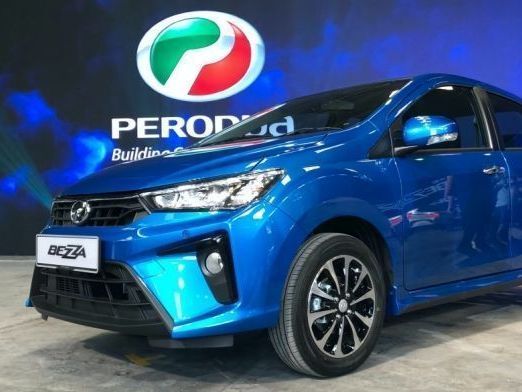
All-New Perodua Bezza Coming 2025: Built on Advanced DNGA Platform
LienJun 4, 2025
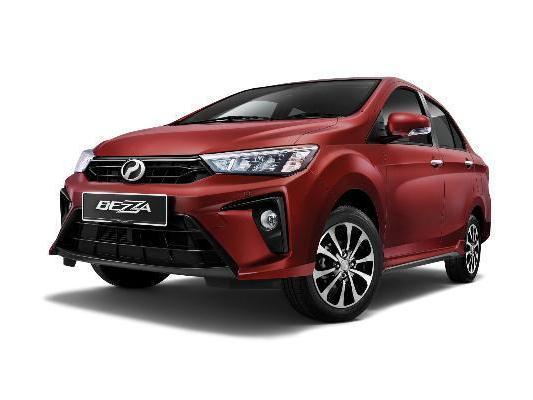
How Much is the Perodua Bezza? Tips for Purchase and Cost-effectivness
LienMar 25, 2025
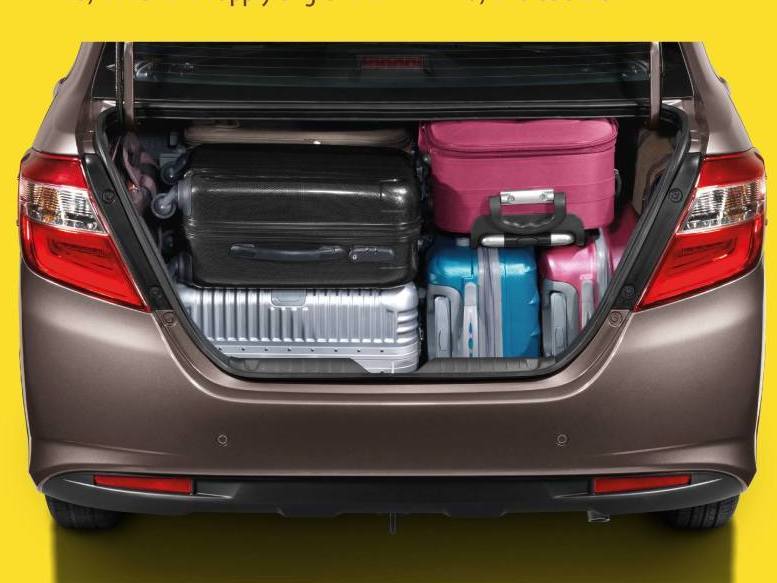
How big is the boot space of Bezza actually?
MichaelMar 12, 2025
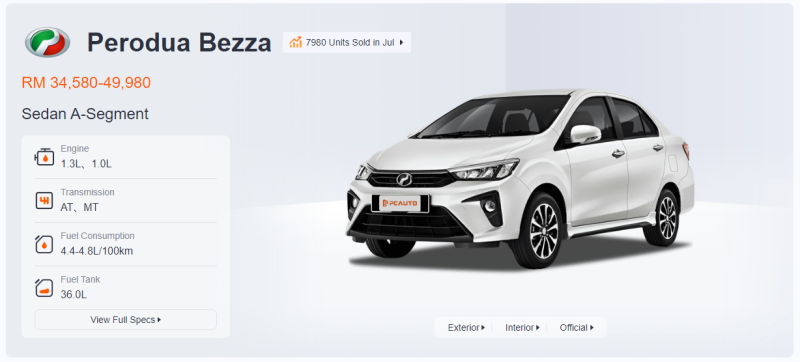
Perodua Bezza is the best-selling, do consumers value fuel consumption or price?
MichaelSep 30, 2024
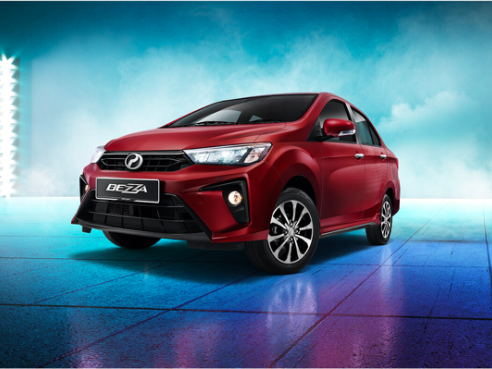
Priced from RM 34,580, is Perodua Bezza the top choice for entry-level sedans in Malaysia?
LienJun 13, 2024
View More

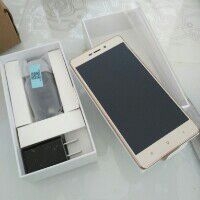

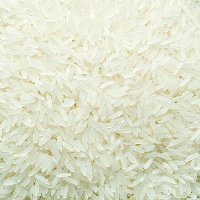








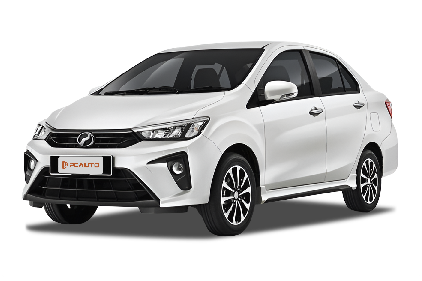





Pros
Cons